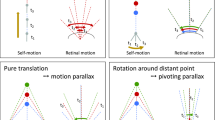Abstract.
The visual homing abilities of insects can be explained by the snapshot hypothesis. It asserts that an animal is guided to a previously visited location by comparing the current view with a snapshot taken at that location. The average landmark vector (ALV) model is a parsimonious navigation model based on the snapshot hypothesis. According to this model, the target location is unambiguously characterized by a signature vector extracted from the snapshot image. This article provides threefold support for the ALV model by synthetic modeling. First, it was shown that a mobile robot using the ALV model returns to the target location with only small position errors. Second, the behavior of the robot resembled the behavior of bees in some experiments. And third, the ALV model was implemented on the robot in analog hardware. This adds validity to the ALV model, since analog electronic circuits share a number of information-processing principles with biological nervous systems; the analog implementation therefore provides suggestions for how visual homing abilities might be implemented in the insect's brain.
Similar content being viewed by others
Author information
Authors and Affiliations
Additional information
Received: 15 June 1999 / Accepted in revised form: 20 March 2000
Rights and permissions
About this article
Cite this article
Möller, R. Insect visual homing strategies in a robot with analog processing. Biol Cybern 83, 231–243 (2000). https://doi.org/10.1007/PL00007973
Issue Date:
DOI: https://doi.org/10.1007/PL00007973




